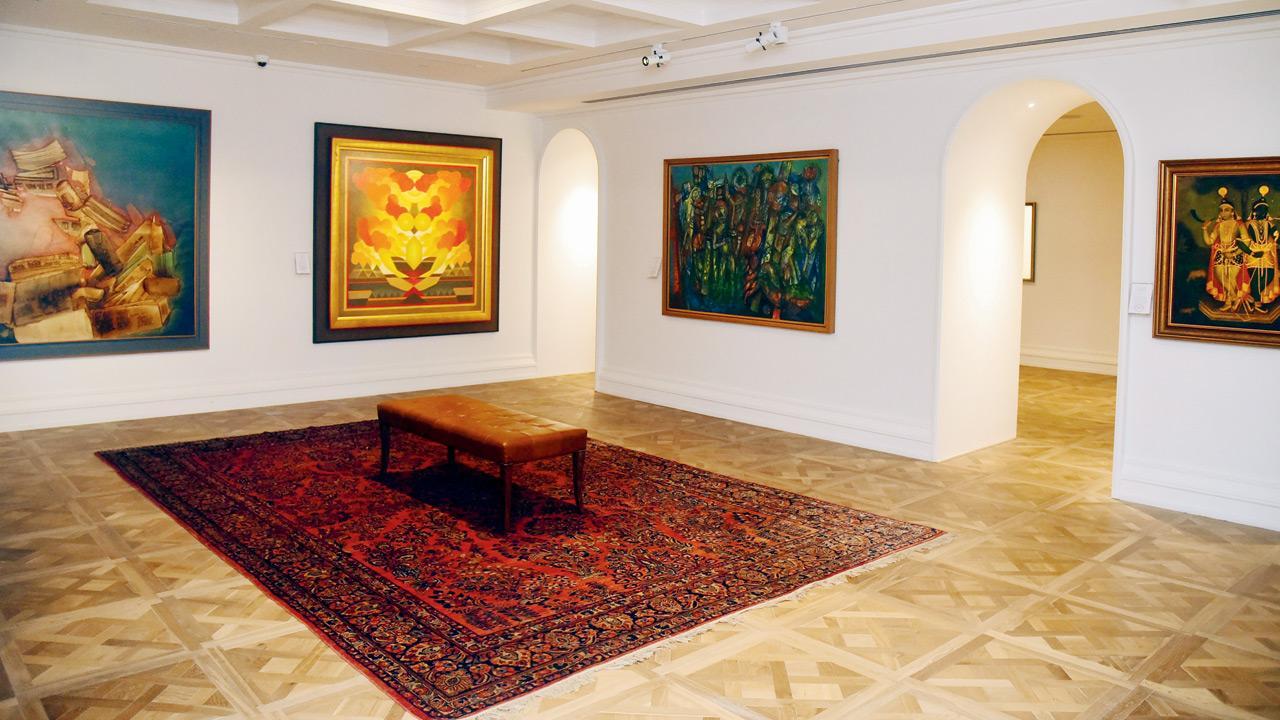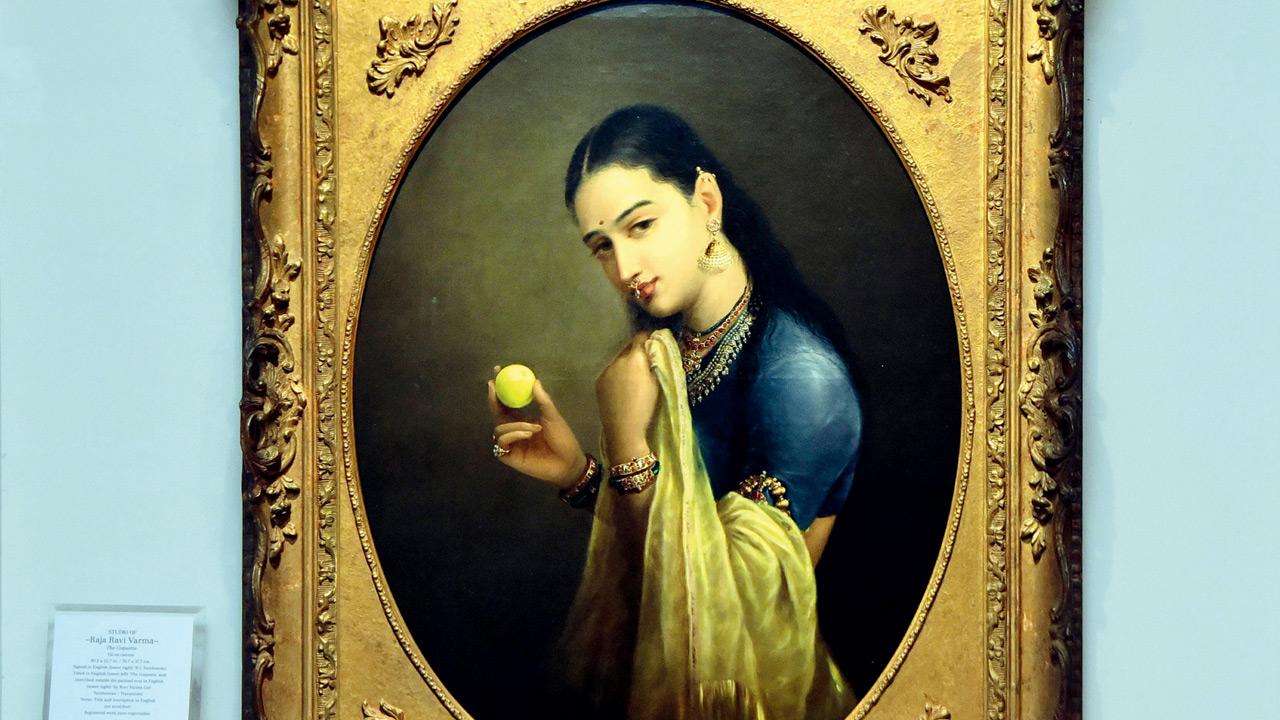With the launch of its twin galleries at Apollo Bunder’s five-star, art firm DAG uncovers Indian art created over the last two centuries, but rarely showcased

DAG’s inaugural exhibition, Iconic Masterpieces, celebrates Indian art history across the last two centuries. Pics/Shadab Khan
It was fairly simple—we always wanted to have a gallery at The Taj Mahal Palace in Mumbai,” says Kishore Singh, senior vice president at art company DAG, about the twin galleries that opened last week at the iconic five star address. This, for some, would be in contrast with gallerists toiling over the last decade to make art less intimidating, more accessible. “Ashish [Anand, managing director] has had a long association with the Taj group. The hotel’s fascinating collection of artworks, the renowned artists they’ve hosted and worked with, and the fact that it is one of the most important addresses, not just in Mumbai but across the country, [drove the decision]. He pursued his decades-long desire to have a gallery there.”
ADVERTISEMENT
Following its successful presence in Delhi, DAG’s first Mumbai gallery opened in 2013 at a Kala Ghoda heritage building, only to shutter in 2020. What first started with a show window in the hotel while the gallery was still housed at Kala Ghoda, eventually led to being offered not one, but two spaces within the hotel, a few hundred steps away from each other.

The Coquette by Studio of Raja Ravi Varma
Characteristically, both galleries are different—the first is cosy and intimate, reminiscent of an old English library; while the second is more open, seeped in natural light with large windows framing expansive views of the city. Both dictate the style of exhibitions they can host. The first gallery serves as the perfect space to showcase masterpieces from DAG’s collection, while the second plans to exhibit ongoing exhibitions through the year.
The inaugural exhibition titled Iconic Masterpieces celebrates Indian art across the last two centuries. “The exhibition straddles a 200-year period, starting from the 18th century, which will make viewers take notice of the gamut of art that’s been created in the country. Even the museums have not showcased Indian art in this way,” Singh claims.
The exhibit begins with remarkable works from the Company School of Painting, never before been viewed in India because they were largely commissioned for the East India Company and its patrons around England and the rest of Europe. These are accompanied by works of European artists—from portrait painters to orientalists—who were well-known in Europe and travelled to create art in India, but again, never had works exhibited here. Paris-based American painter Edwin Lord Weeks, Dutch artist Marius Bauer, and Frank Brooks and Stefan Norblin from England are among these. “We’re very privileged and proud to bring these works back home, which the Indian audience deserves to see,” beams Singh. The oldest work from the lot to look out for is the Company School painting by an anonymous Agra artist, of a riverside view of Agra Fort. This is their largest documented artwork ever recorded.
The exhibition also hopes to highlight relationships between different styles, and how they change over time. Singh points out, “Let’s look at how women have been represented by different artists, in terms of subject. There’s The Coquette by the Studio of Raja Ravi Varma, which is a gorgeously realistic painting; Yashoda and Krishna from the Bengal School of Art; and Seated Nude on a Blue Armchair by FN Souza. Notice the mapping of the portraits of women, how they are represented over periods of time, and how art movements shape them. I think there’s an important lesson in art history over here when you begin to find these connections.”
Planning and curating a show on this grand yet intricately detailed scale also requires a large archival and research team. Singh illustrates how each work is studied by looking into its history through documentation and old photographs, studio records, sketch books, notes and letters. “The depth of research lends an element of surprise that will always continue to make its mark in our exhibitions.”
WHERE: Iconic Masterpieces, DAG, The Taj Mahal Hotel, Apollo Bunder
WHEN: Till May 30, 11 AM to 7 PM
CALL: 49222700
 Subscribe today by clicking the link and stay updated with the latest news!" Click here!
Subscribe today by clicking the link and stay updated with the latest news!" Click here!







